When we finally escape the icy grip of winter, we tend to greet the summer by spending an excessive amount of time outside. Activities like hiking, camping, and all things outdoors are the most popular way of passing the time. Unfortunately, too much time outside can leave its mark and have you searching frantically for home remedies for sunburn!
[the_ad_placement id=”in-text-1-type-r”]Sunburn treatments come in many forms, but they aren’t always available when you need them most. If you are enjoying some time in a rural or remote landscape, it’s important to remember various treatment options.
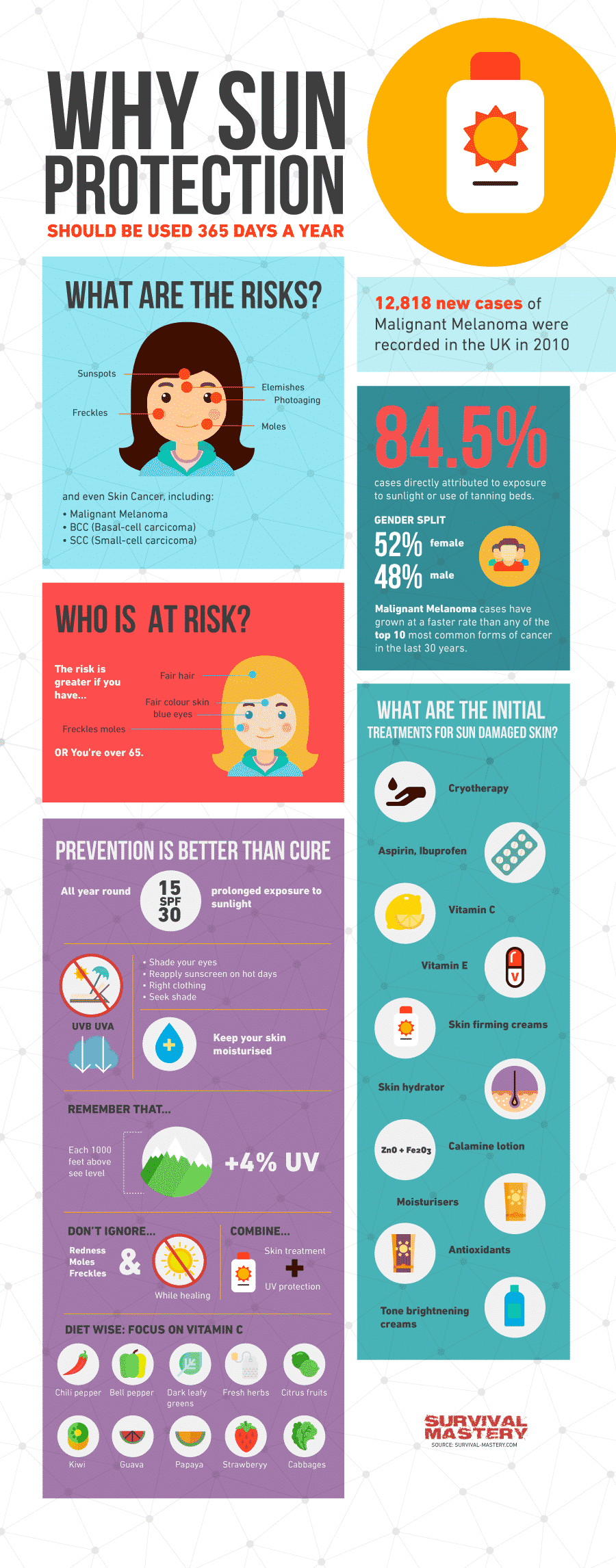
Forests and mountainous areas aren’t usually equipped with well-stocked stores which means that you will need to rely on the contents of your pack and nature for a solution.
What happens during Sun exposure?
When looking for information on how to get rid of sunburn, you will come across a fair amount of treatment options as well as information about sunburns. Learning how to treat sunburn means that you need to identify the symptoms and use this knowledge to select the right remedy for you.
It’s no secret that preventing sunburn is by far easier than treating one. It should be mentioned that applying and reapplying a sun protective lotion or spray will take just moments of your time. Whereas the pain will take days to subside and then you might have to deal with some significant exfoliation and itching.
See also:
When your skin is exposed to the sun, it comes into contact with UV (or ultraviolet) rays. If you are only mildly exposed, you will experience a first-degree burn that only affects the top layer of skin and is not as painful as a more severe burn. A second-degree burn occurs when the deeper layers of tissue have been affected as well as the nerves below the skin. You will most likely notice blisters appear in second-degree sunburns, and they are extremely painful. Understandably, the more severe the burn, the longer it will take to heal.
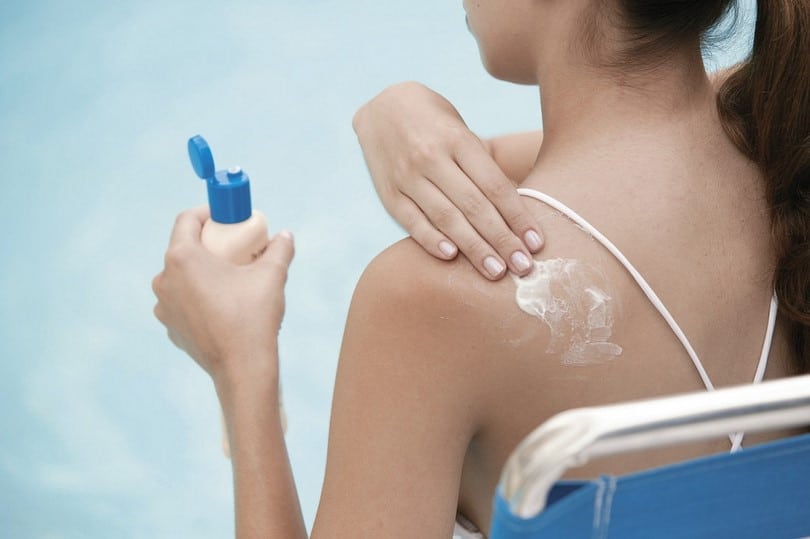
Sunscreens have special protective factors that prevent the harmful rays of the sun from penetrating your skin. The greater the sun protection factor (SPF), the more you are protected.
Additional problems that accompany sunburn
Figuring out how to soothe sunburn goes beyond the skin and the initial burn. There are a number of other symptoms and complications that need to be observed and treated too. When figuring out the best way of getting rid of sunburn, keep the following potential complications in mind:
- Heatstroke or other symptoms related to excessive heat exposure. Heatstroke symptoms include confusion, unconsciousness for more than a few seconds, anxiety, convulsions, difficulty breathing, rapid heart rate, excessive or lack of sweating, red hot and dry skin.
- Allergies to sun exposure or sun protection products. It is always a good idea to test any new product on part of your body before spreading it all over. Purchase your sunscreen before the summer season begins and make sure that you give it a try on a small part of skin on the inner part of your arm or thigh where the skin is most sensitive. This is of particular importance when applying sunscreen to an infant or child. See our article on natural remedy for allergies for more information.
- Problems affecting your vision such as partial or even complete vision loss. Headaches are also common and not necessarily as a result of the sun itself. The brain relies on a specific water balance. When this balance is disrupted due to dehydration, you develop a headache.
Make sure that your read our article on what to wear when hiking to stay protected.
Main risk factors
There are several factors that increase the risk of sunburn. Familiarizing yourself with the points listed below is important when planning any outdoor adventure.
- Those who have fair skin are particularly vulnerable and should know how to tend to sunburned skin.
- Knowing how to ease the sting of sunburn is essential for those living or visiting sunny locations.
- Spending excessive amounts of time working outdoors (particularly on a daily basis) will increase your chances of sunburn and skin damage.
- Enjoying outdoor activities while consuming alcohol may affect your judgment and you may not realize how much the sun has affected your skin.
- Some might say that artificial light sources like tanning beds provide safe conditions for getting that gorgeous glow. However, you are still exposing your skin to UV light, and this is still damaging.
- Some types of medication make patients photosensitive, and this increases the chances of burning even with minimal exposure.
- The time of day will also determine your level of risk. From approximately 10am until 4pm, the risk is at its highest.
- Cloudy days might seem harmless, but you stand an even higher risk of burning because you won’t feel it!
- Altitude is also a significant factor. The higher you travel, the thinner the atmosphere and the less it will block the UV rays of the sun.
- The UV index of the day will also determine the risk.
Complications and long-term problems
The way you manage sunburn and related symptoms will partly determine how long the recovery process should take. If you don’t know how to rid yourself of sunburn as soon as it affects you, you will most likely experience more severe symptoms, and there are several complications and long-term issues that can occur.
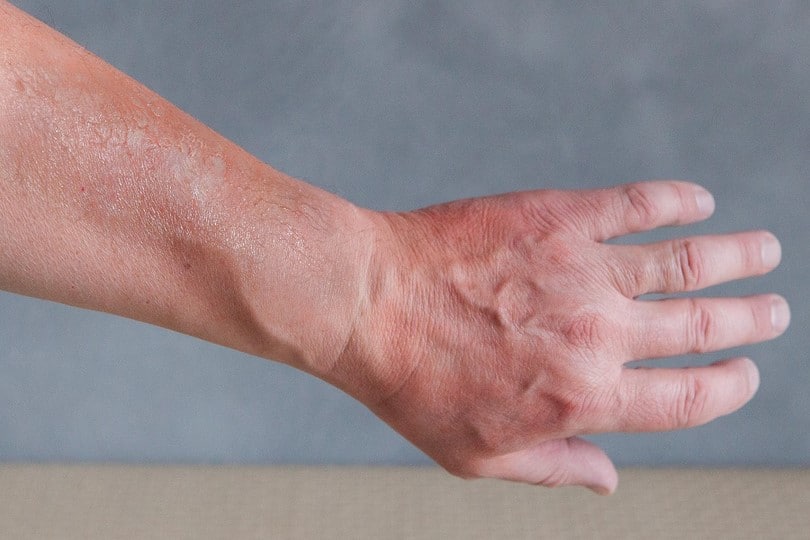
Some of the main concerns with regards to neglecting treatment, extreme sun damage and repeated damage include:
- The risk of infection should your blisters rupture and be left unattended.
- Premature aging in the form of deep wrinkles, rough and dry skin, weakened connective tissue, the appearance of fine red veins on the face, increased number of freckles and dark or discolored skin
- Precancerous lesions on the skin and an increased risk of developing skin cancer is a troubling problem that is directly related to excessive exposure to UV rays
- The UV rays of the sun can also damage your eyes. This is why so many eyewear manufacturers promote glasses with built-in UV protection.
- There are also an increased number of cold sores.
- Other health conditions like lupus are also accelerated by spending too much time in the sun.
Home remedies
There are several highly effective remedies for those looking for a way to stop sunburn from stinging and itching. The way in which you choose to remedy sunburn will depend on the resources available. In many cases, over the counter medications such as ibuprofen and aspirin are quite effective in terms of pain relief. Of course, if you’re nowhere near a pharmacy or home, there are various other natural options.
Aloe vera
You may have noticed a wide range of after sun products that contain Aloe Vera. The benefits of this plant are well-known throughout the world, and it provides immediate relief. That said, fresh aloe is a more effective choice than lotions that contain aloe.
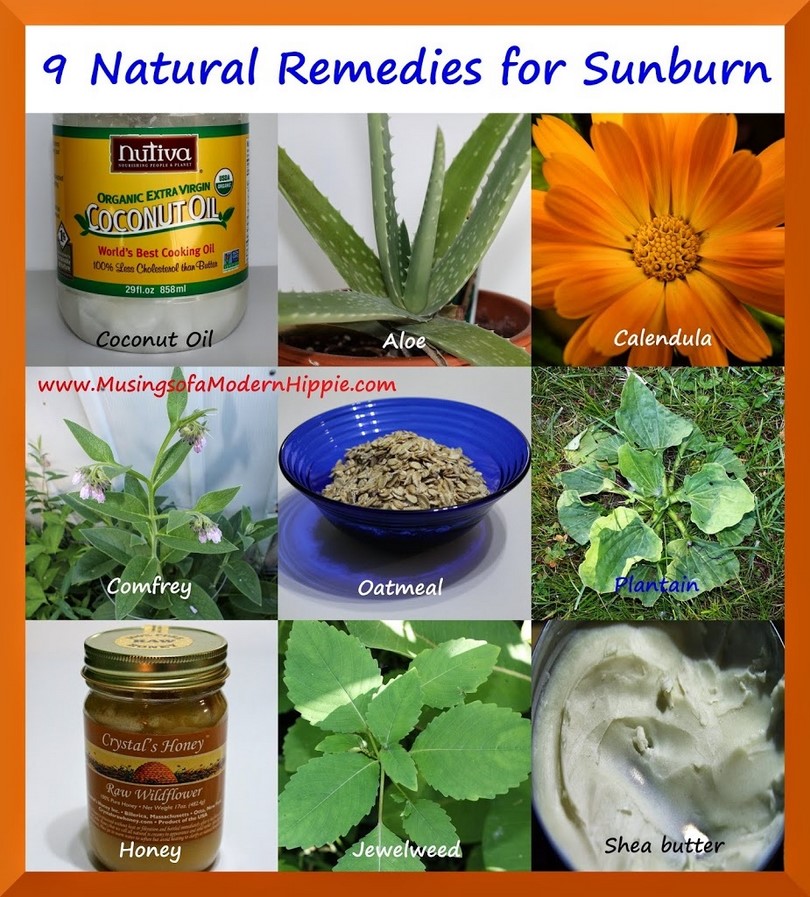
A higher level of concentration means that fresh aloe is also faster acting. Pick several pieces from the succulent plant and crush the juice out before applying to the skin. Alternatively, if possible, peel the top layer off the plant to reveal the juicy inner flesh. Rub the flesh of the plant directly on the affected area. Check out our article on the best uses of honey to give you more options.
Cold shower or compress
Sunburned skin is not only red and tender, but it also releases a large amount of heat. The skin can be effectively cooled down by taking a cold shower or by applying cold compresses. Avoid ice cold showers since this could be too much of a shock. Lukewarm water is best, and you can always adjust the water temperature slowly as your body adjusts. It is important to keep in mind that your body is hot, and even lukewarm water will feel colder than usual as a result.
[the_ad_placement id=”in-text-2-type-r”]Compresses can be applied using a clean cloth or a few layers of gauze. Wet the compress and apply to the affected area. Let it sit for a few minutes before removing, shaking out and reapplying. Shaking the cloth will cool it down without you having to soak it in water again. This is also highly effective for reducing fever.
Add vinegar to bath
If you have a bath or any other tub large enough to soak in, prepare a cool bath and add a cup of cider vinegar. There is no need to add too much vinegar to the water since its main function is to regulate the pH level of the water.
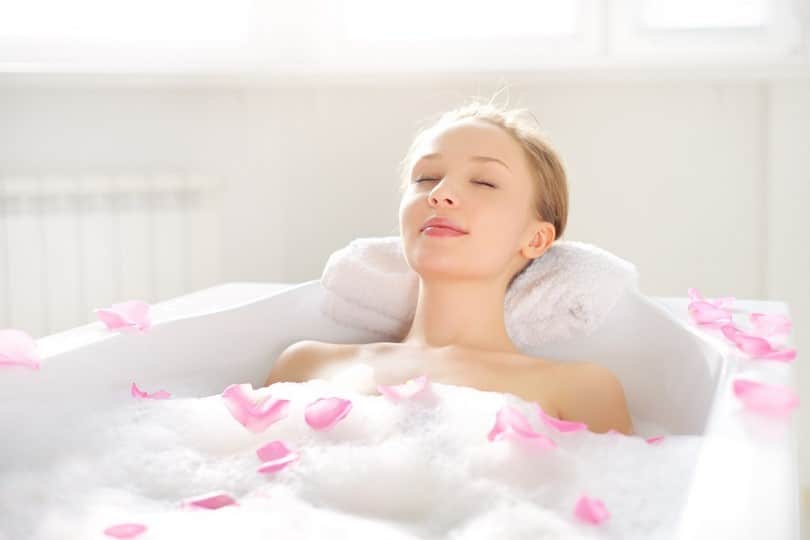
The vinegar helps relieve the stinging sensation while the cool water helps reduce fever and cools the skin down at the same time. After soaking for a few minutes, dab the skin dry and don’t forget to stay hydrated.
Milk
Cool milk can also be applied to the sunburned skin. Pour milk onto a clean cloth and gently dab on the affected area. Remember to use cool milk rather than cold milk straight from the fridge. Like applying water, it should be cool rather than cold. The milk creates a protein film that helps soothe that sting.
Black tea
Brew a fresh pot of black tea and allow it to cool down to room temperature and apply to the affected area using a clean cloth.
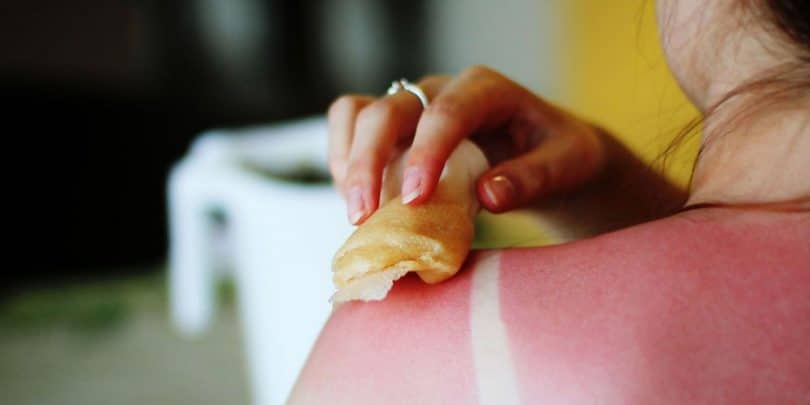
Black tea contains tannic acid that helps restore the pH balance while soothing that stinging sensation.
Cucumber paste
Chilled cucumbers can be blended into a paste and applied directly to the skin. Cucumbers are known for their analgesic and antioxidant properties. By cooling the cucumbers down before applying to the affected area, it will also help bring down the temperature of the skin.
Oatmeal
This is probably one of the best tried and tested home remedies for treating sunburn and also one of the most effective. Cook up some oats and allow it to cool down. Apply the chilled paste to the affected area.
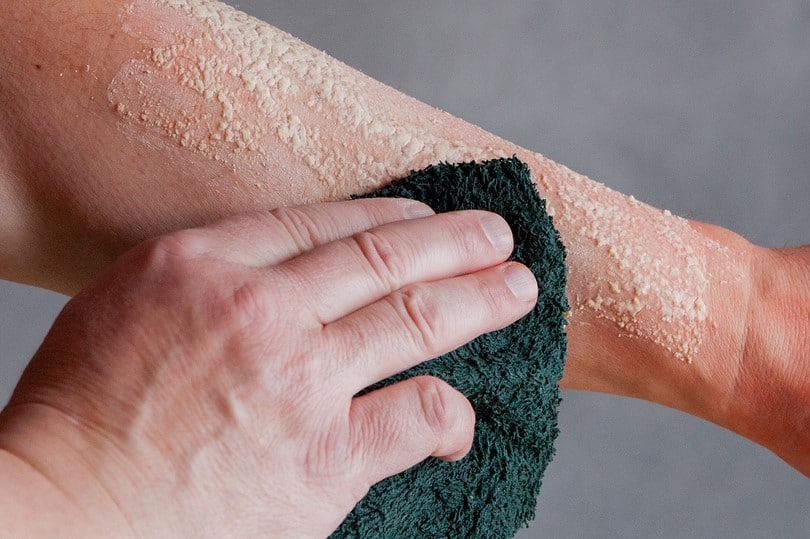
The anti-inflammatory properties in oatmeal are believed to soothe skin while offering pain relief. By cooling the oatmeal down, this paste also helps draw out the heat.
Potato paste
Potatoes are a known treatment for soothing burns, bites, scratches and skin irritations. They are also believed to help relieve inflammation. Some people respond better to the juice whereas others prefer using slices. It might be a good idea to try both approaches to see which one works best for you.
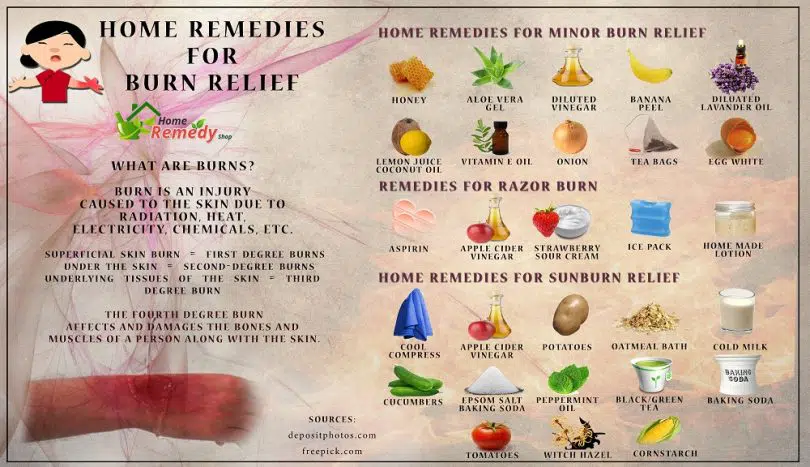
Before you begin, you will need to scrub the potatoes thoroughly. You can then choose between grating or chopping the potatoes up and blending them. You need not peel the potatoes. When using the blender, make sure that you don’t chop the potatoes any smaller that they would end up when using a grater. If you find that the potatoes aren’t as juicy as you’d like, you can mix them up with a bit of water.
Once your mixture is ready, soak some cotton balls or gauze in the mixture for a few seconds. Use the gauze or cotton balls to apply the mixture on the affected area. Cotton balls are effective for smaller surface areas but if the affected area is large, gauze would be the better option. Alternatively, if you have no means of blending or grating the potatoes, you can slice them instead and apply the slices to the affected area.
Baking soda or cornstarch
Cornstarch has a soft, smooth texture and is often used to soothe burns. Alternatively, if you don’t have any cornstarch at home, you can try baking soda. Both products are known to lessen pain along with redness of the skin.
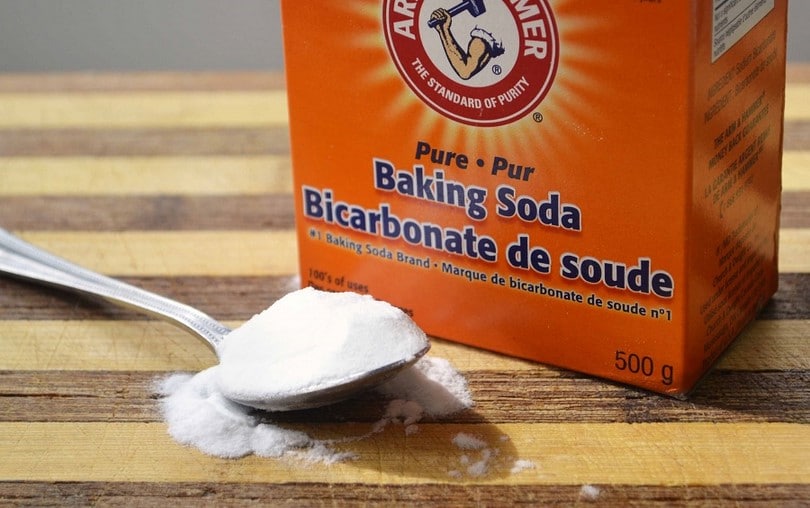
The amount of baking soda or cornstarch that you will need depends on how large the affected area is. No matter which one of these two you choose, you should mix it with enough water to create a paste. The water you add should be cool but not too cold. Once the paste is prepared, you will need to spread it over the affected area. Leave this paste on until the heat or pain is reduced before rinsing off completely.
Plain yogurt
There are many different types of yogurt, so you do need to take care and read the label carefully when making your selection. Look for plain yogurt that is specified as being live cultured. This yogurt will have plenty of enzymes and probiotics that help repair the skin. You should also take care that you don’t mistake vanilla for plain yogurt since they can look similar at times.
The amount of yogurt you need will depend on how large the affected area is. Simply wash your hands thoroughly and apply the yogurt as you would any body lotion. The only difference being that you won’t rub it in but rather pack it on to form a cooling barrier. It should sit for at least 5 minutes before rinsing off. Remember to rinse with cool water rather than cold or hot water.
Shaving cream
This home remedy might sound strange, but it can offer some amazing instant relief. Shaving cream contains various ingredients (including menthol) that help cool and soothe the skin. Shaving creams that contain menthol are particularly useful since the menthol takes out that heat and burn as it evaporates. Simply apply a layer of shaving cream to the affected area and allow it to take effect before rinsing off thoroughly with cool water.
Blister care
Blisters are a painful reminder of excessive UV exposure. Different blisters require different types of treatment, and they are not always cause for alarm. A small blister (unbroken) usually heals on its own. Even if it is a blood blister, the smaller ones are fairly harmless. You can protect the blister by applying a loose bandage and avoiding the sun, of course.
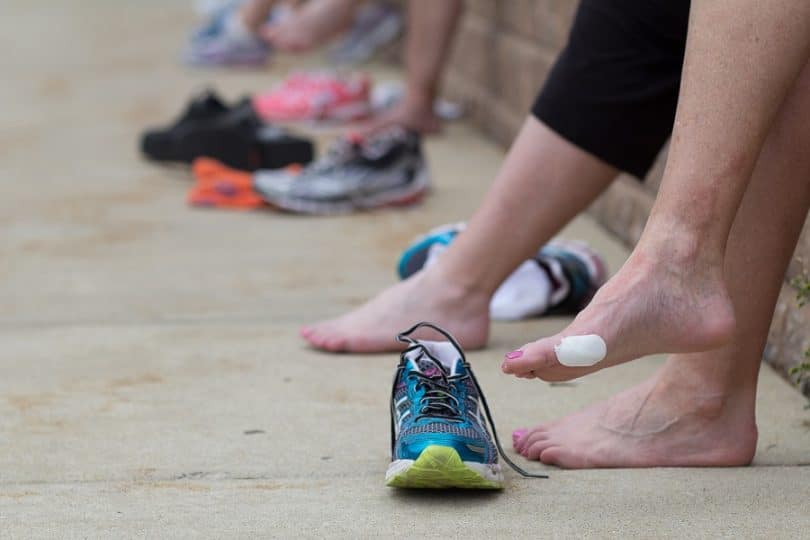
Larger, painful blisters are usually best drained. This should be done as per strict guidelines and with great care to avoid infection and other complications. The first thing you need to do is sterilize the needle. This can be done using rubbing alcohol or even some high proof alcohol if you are in a real bind and have few supplies. You should the puncture the blister very gently. Puncture the side rather than the top. This will make it easier to drain.
Press down gently on the blister to help this process along and eliminate the fluid. Anyone with conditions like diabetes, cancer, heart disease or HIV should avoid draining the blister themselves due to the increased risk of infection.
[the_ad_placement id=”in-text-3-type-r”]Once the blister is drained or if it accidentally tore open, you will need to wash it gently with some soap and water. Avoid iodine, alcohol or any other cleansing product. Do not remove the flap of skin over the blister since this provides added protection during the healing process. Only remove the skin if it is torn, dirty or if you notice pus underneath.
Smooth the flap of skin down and apply an antibiotic ointment. Cover with a bandage and monitor. If any adverse reactions occur, you may need to stop using the ointment. The bandage should be changed once a day or whenever it gets dirty. At night, you can remove it and allow the area to air dry.
Things to avoid
While treating sunburn, it’s important to avoid certain things that may aggravate your burn or irritate the skin. Firstly, it should go without saying that you need to stay out of the sun. In fact, you also need to stay indoors because UV rays have a way of reflecting and reaching your skin even when you’re in the shade. Other factors like the wind also burn the skin.
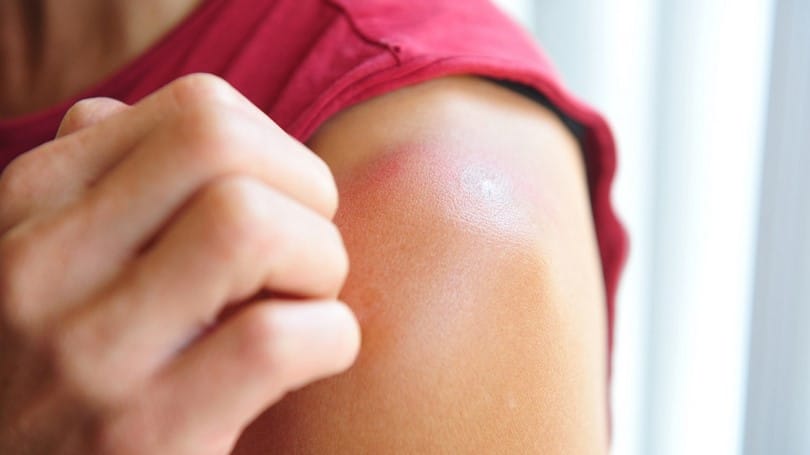
If you are suffering from sunburn, avoid wearing tight fitting clothes. You should also avoid wearing synthetic clothing (like silk or similar materials) that don’t allow the skin to breathe. This will trap the heat released from your skin and make matters worse. While it is important to clean a burst blister with soap and water, you should avoid using soap on the entire affected area. Soap will cause your skin to dry out even more, and this will lead to further discomfort.
When to see a doctor
The tips mentioned above on how to take care of sunburn are ideal for those who are suffering the effects of mild sunburn. They are handy to keep in mind when in a remote location without medical assistance or pharmacies nearby. With all of this information on how to relieve sunburn, it is also essential to seek medical attention should you notice any of the following:
- If a large portion of your body is blistering
- If you suffer from extreme pain, a high fever, chills, headache, nausea or confusion.
- If your home remedy does not seem to have any effect after two days.
- It is also important to seek immediate medical attention should you notice any signs of infection. Common signs of infection include increased pain and tenderness, swelling, pus draining from an open blister or red streaks running outwards from the blister.
If you notice any other symptoms that are associated with sunburn (such as dehydration), it might be best to seek professional medical attention.
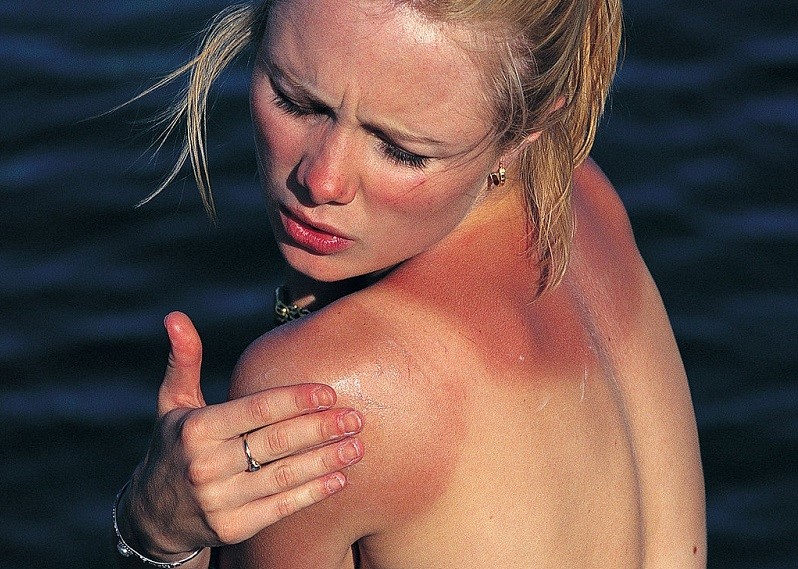
In some cases, even when sunburn is not quite that bad, heatstroke can set in. These symptoms are both alarming and dangerous. Age is another important concern since young children, infants, and the elderly are that much more sensitive.
The amount of time required for your body to heal from sunburn will depend on the severity of the burn and the course of action taken. It’s not just how about how to ease it, it also depends on how quickly you act and treat any additional symptoms. Mild sunburn should take between three and five days to heal and should not affect your daily activities.
Moderate ones can take a few days longer for the sting to subside, and you might take a couple of days off from work, school or other regular activities. Severe sunburn may require hospitalization and recovery could take a few weeks.

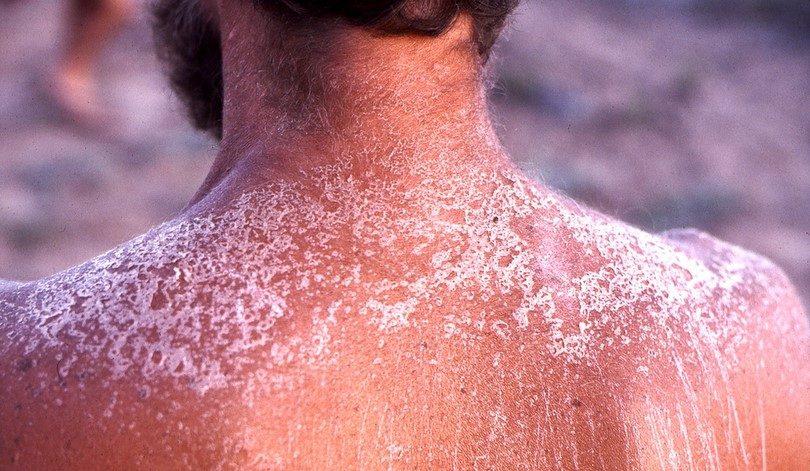

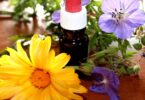
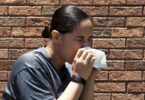

When I go for a trip in countries with hot weather, I
always take sun cream with me. It is not a secret that sometimes it doesn’t protect so much and you get sunburned.
The first thing I do is to spread special spray, called Panthenol on skin. It is really good for such cases. If there is no Panthenol, I can mix cucumber paste with sour cream and spread it over damaged skin. It has really good effect on it.
Thank you for sharing these tips with us!
I agree with using Panthenol, I also have several pots of aloe vera at home and they do come in handy during hot months, especially when my kids go out and swim all day.
aloe plant is a good relief for sun burn, also for hot seasons, this make a good juice also if you want.